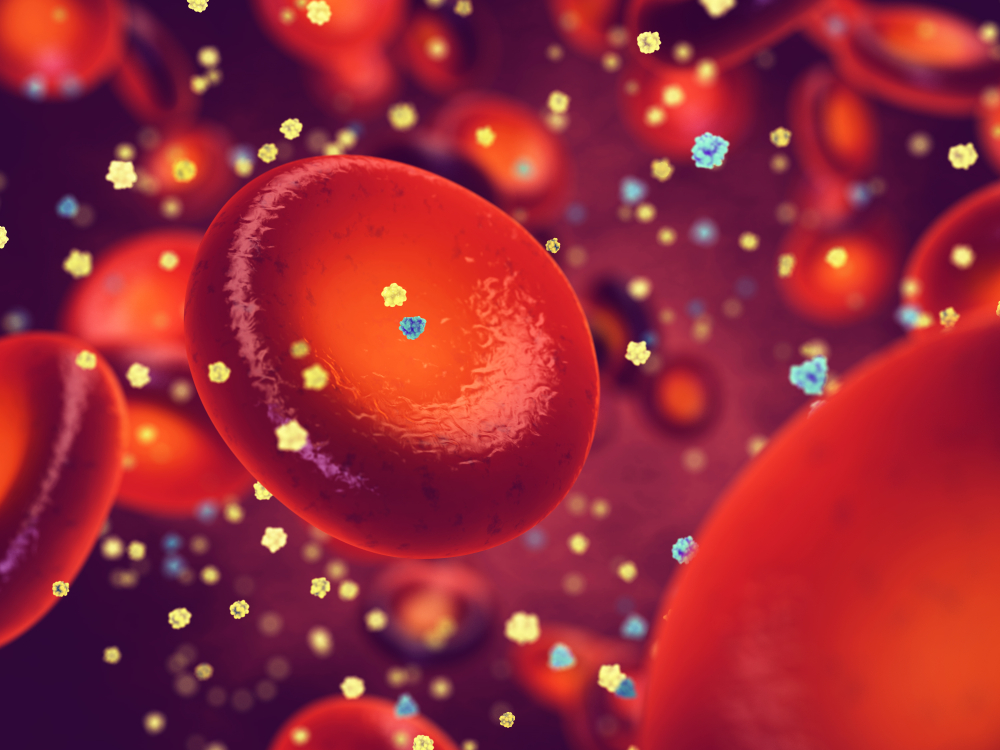
What is being tested?
Thiopurine methyltransferase (TPMT) is an enzyme that breaks down (metabolises) a class of drugs called thiopurines. These drugs are used to suppress the immune system and are prescribed to treat various immune-related conditions or blood disorders (e.g., leukaemia). The activity level of the TPMT enzyme, or the genetics underlying the enzyme's activity, is tested before thiopurine drug therapy to make sure that individuals treated with the drugs can metabolise them.
Examples of thiopurines include azathioprine, mercaptopurine, and thioguanine. These medications are used to treat diseases such as acute lymphoblastic leukaemia, inflammatory bowel disease and autoimmune disorders. They may also be prescribed for organ transplant recipients to help delay or prevent organ rejection. If someone's TPMT activity is too low, the person may not effectively metabolise thiopurines, which can lead to severe side effects.
About one person in every 300 is severely deficient in TPMT, and about 10 per cent of the population have lower than normal levels of TPMT. Individuals in both categories are at an increased risk for thiopurine drug toxicity, which can include suppression of the bone marrow (myelosuppression) and/or very reduced levels of blood cells, such as red blood cells, white blood cells and platelets (haematopoetic toxicity). This can lead to complications such as anaemia, serious infections, and/or excessive bleeding.
These side effects can cause an individual to become severely ill and may even be life-threatening. These side effects can be avoided if TPMT production is tested before starting thiopurine treatment.
There are two ways to determine whether an individual is at risk of side effects from thiopurine therapy:
How is it used?
The tests for thiopurine methyltransferase (TPMT) enzyme activity or its underlying genetics are measured in people who are about to start treatment with a thiopurine drug. One or the other of these tests is used to identify individuals at risk of developing severe side effects from thiopurine therapy.
People who have low enzyme activity have an increased risk of side effects, and those who are severely deficient are likely to experience serious side effects such as suppression of the bone marrow. When the bone marrow is suppressed, it is unable to produce sufficient numbers of red blood cells, white blood cells, and platelets. This may result in a significant drop in blood cell counts, leading to complications such as anaemia, serious infections, and/or excessive bleeding. These complications may be life-threatening.
Thiopurines such as azathioprine, mercaptopurine, and thioguanine are drugs that are prescribed for diseases such as acute lymphoblastic leukaemia (ALL), inflammatory bowel disease, and autoimmune disorders. They may also be prescribed for organ transplant recipients to help prevent organ rejection.
When is it requested?
A doctor will typically request a blood TPMT test before starting a patient on thiopurine drug treatment or if they suspect that existing side effects may be due to a deficiency of this enzyme.
What does the result mean?
Phenotype test for TPMT
Genotype test for TPMT
Is there anything else I should know?
Though the TPMT test is used to predict risk of bone marrow toxicity, full blood counts (FBCs) should also be done at regular intervals to detect bone marrow toxicity during treatment with thiopurine drugs. The FBC is a common blood test that measures the number of red blood cells, white blood cells and platelets. It is often used to monitor drug treatments that are known to affect the bone marrow.
The TPMT enzyme activity is measured in red blood cells so if you have recently received a transfusion of blood the results of this test may be inaccurate.
Besides your genetic makeup, there may be other reasons for increased risk of bone marrow toxicity (myelosuppression) from treatment with thiopurine drugs. Interactions between certain drugs can also inhibit TPMT enzyme activity. These drugs include naproxen, ibuprofen, ketoprofen, furosemide, sulfasalazine, mesalazine, olsalazine, mefenamic acid, thiazide diuretics, and benzoic acid inhibitors. TPMT inhibitors may contribute to falsely low test results.
Common questions
No one really knows the answer to this. The enzyme is found in many cells but the interest in the enzyme is purely in looking at patients who are on thiopurine drugs.
A doctor may order a blood test for thiopurine metabolites to monitor drug therapy. Measuring the metabolites is another way to ensure that toxic levels do not build up in the blood. Prior to administering the first dose, a doctor may test a person's TPMT enzyme activity or genotype to help determine risk of side effects as described in other sections of this article. The doctor can adjust the prescribed dose according to those results. After therapy begins, the level of metabolites can be measured and monitored, with subsequent doses adjusted as necessary to avoid toxicity.
Pathology Tests Explained (PTEx) is a not-for profit group managed by a consortium of Australasian medical and scientific organisations.
With up-to-date, evidence-based information about pathology tests it is a leading trusted source for consumers.
Information is prepared and reviewed by practising pathologists and scientists and is entirely free of any commercial influence.